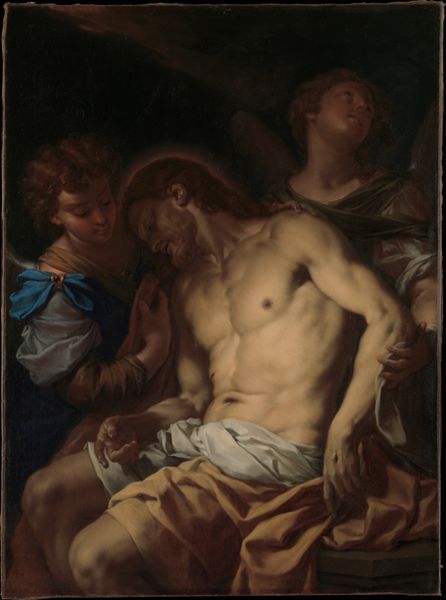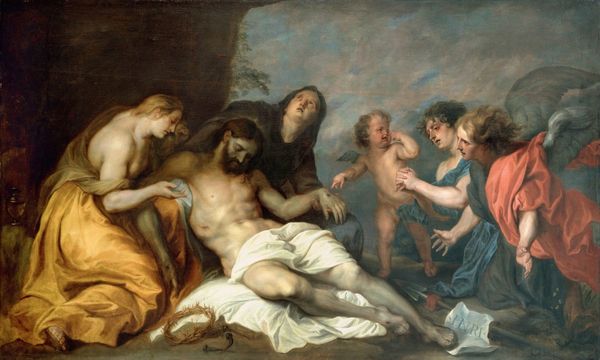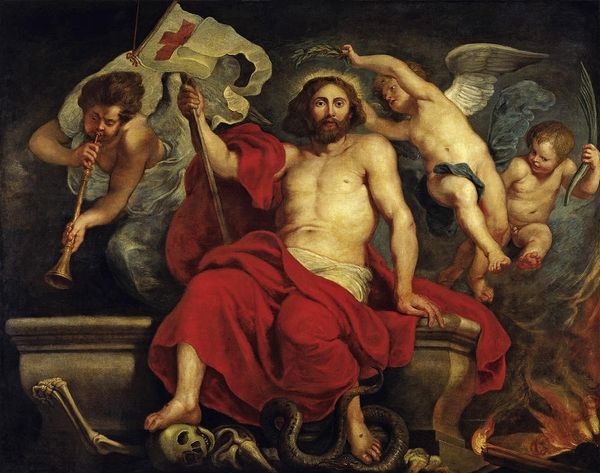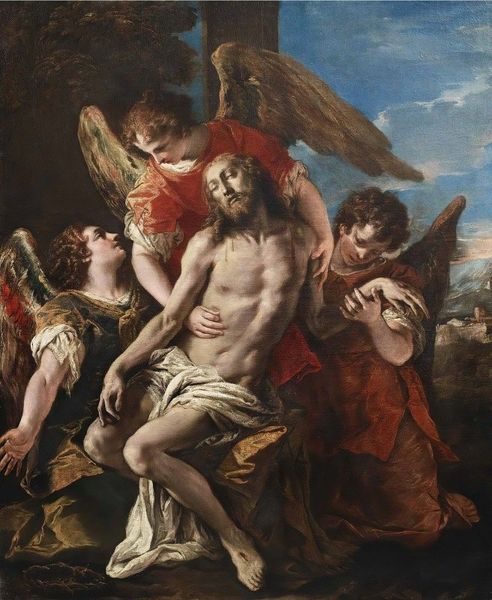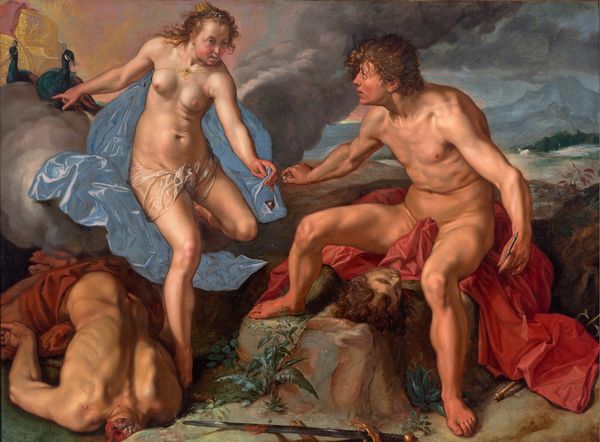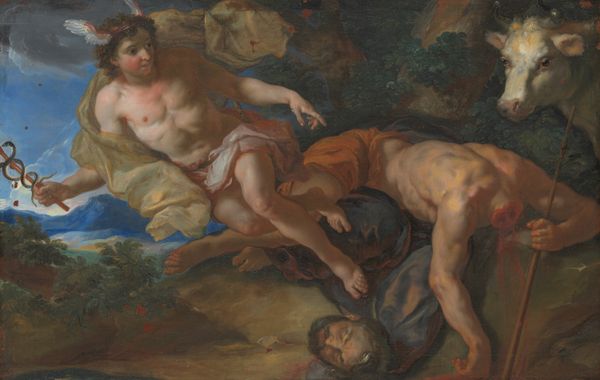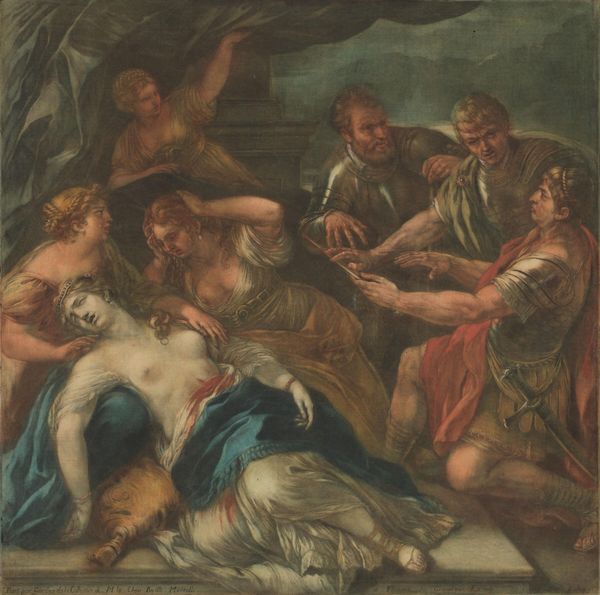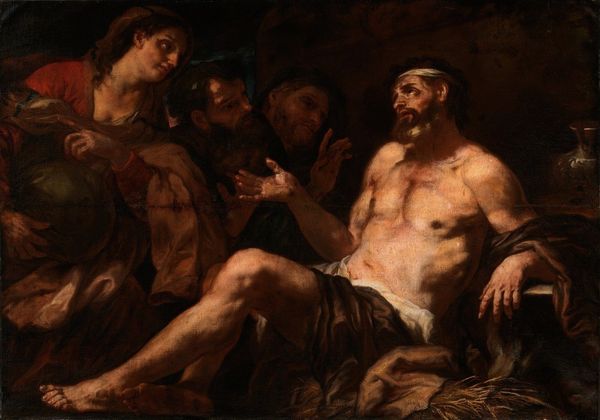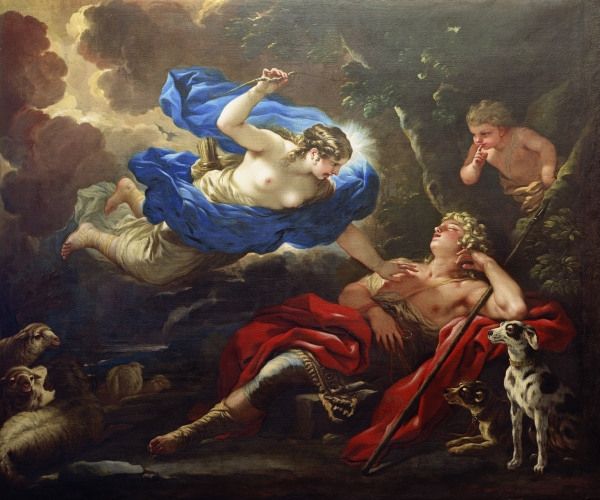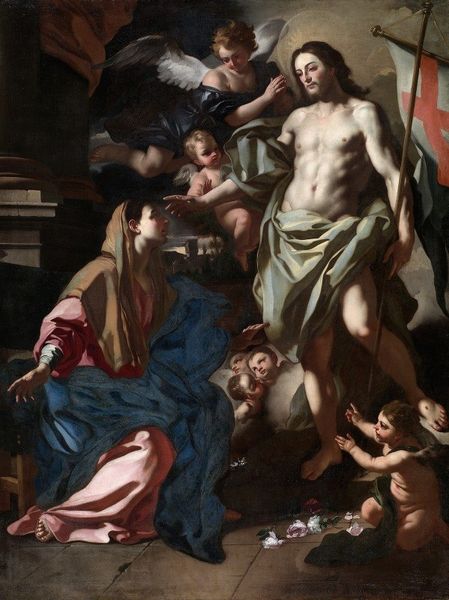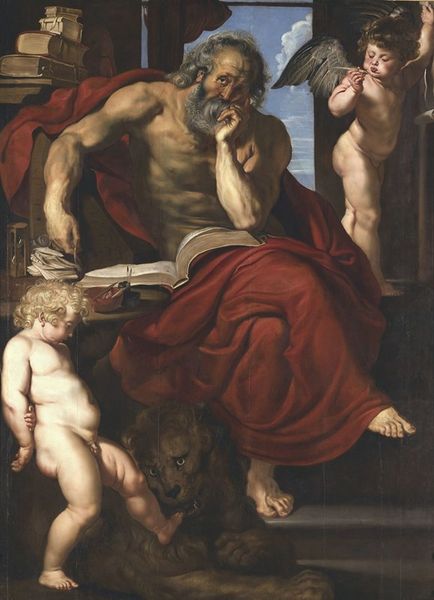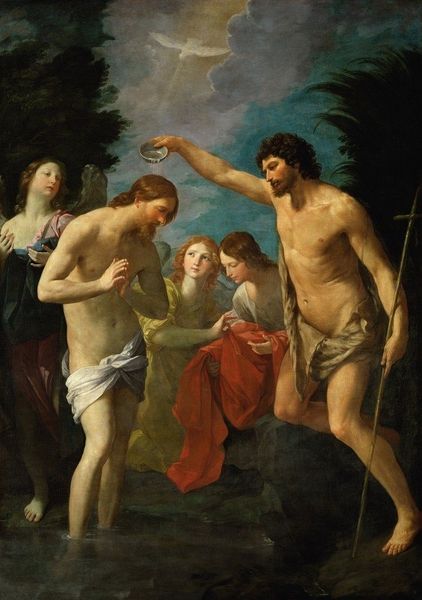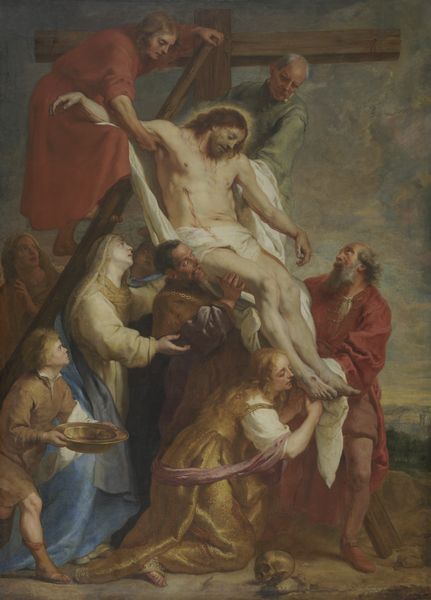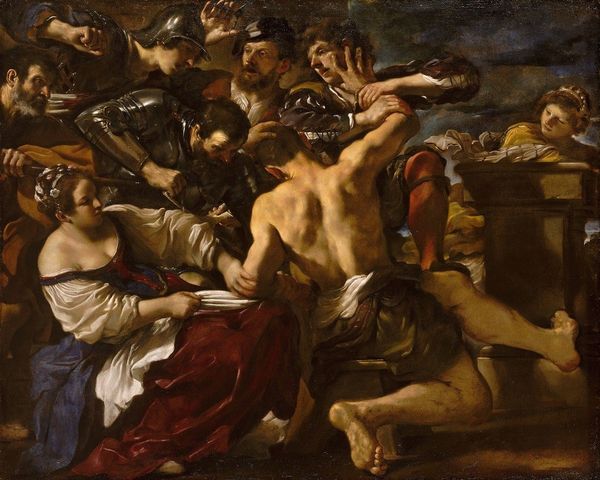
Apollo Granting Phaeton Permission to Drive the Chariot of the Sun 1690 - 1695
0:00
0:00
painting, oil-paint, oil-on-canvas
#
portrait
#
allegory
#
baroque
#
painting
#
oil-paint
#
figuration
#
oil painting
#
history-painting
#
nude
#
oil-on-canvas
#
portrait art
Dimensions: 32 × 49 1/2 in. (81.3 × 125.2 cm)
Copyright: Public Domain
Curator: Before us is Johann Michael Rottmayr’s *Apollo Granting Phaeton Permission to Drive the Chariot of the Sun*, a painting completed between 1690 and 1695, housed right here at The Art Institute of Chicago. Editor: Wow, the flamboyance really strikes you first, doesn't it? All those lush, swirling figures… and the raw musculature seems heightened, idealized almost to a fault. You can feel the layers of paint – it’s got real texture, real physical presence. Curator: Indeed, that robust Baroque style was quite popular, particularly when artists depicted mythological scenes for aristocratic patrons. It certainly reinforced existing power structures, lending a grandeur and divine right to the elite. Editor: Absolutely. Consider the act of creation itself: the grinding of pigments, the skilled labor involved in stretching that vast canvas, then layering paint to mimic flesh…It's the artist acting as a producer of this kind of fantasy, reinforcing social hierarchy in pigment and oil. Curator: Rottmayr's composition deliberately draws us into a world of myth, depicting the pivotal moment where Apollo, the sun god, allows his son Phaeton to drive the solar chariot. This, of course, ends in catastrophe, with Phaeton losing control and scorching the earth. Editor: The material choices speak volumes too. Oil paint lends itself so well to skin tones, those pearly highlights…and you notice the drape of those crimson cloths. Such bold colors weren't simply there, but created with mineral pigments from far afield. Think of the trade routes involved! It's all about luxury, literally coating the canvas with wealth and class distinctions. Curator: It's interesting to consider this scene within its cultural context, a cautionary tale of hubris, while also glorifying power. Were contemporary viewers equally aware of the potential critique, or simply overwhelmed by the spectacle? Editor: Good point! It makes you wonder about Rottmayr himself: a skilled artisan producing lavish spectacle on commission. The question of whether he fully believed in the social messages he's so brilliantly conveying in his craftsmanship adds a further layer. Curator: Looking closer today gives us space to ask how visual representation plays its role, as much as a means for pleasure as a display of political messaging. Editor: Right, it urges us to challenge ourselves to view beyond just the image itself, and towards appreciating it as the physical result of craft, labor, and commerce, which are each charged and essential for its completion.
Comments
No comments
Be the first to comment and join the conversation on the ultimate creative platform.
